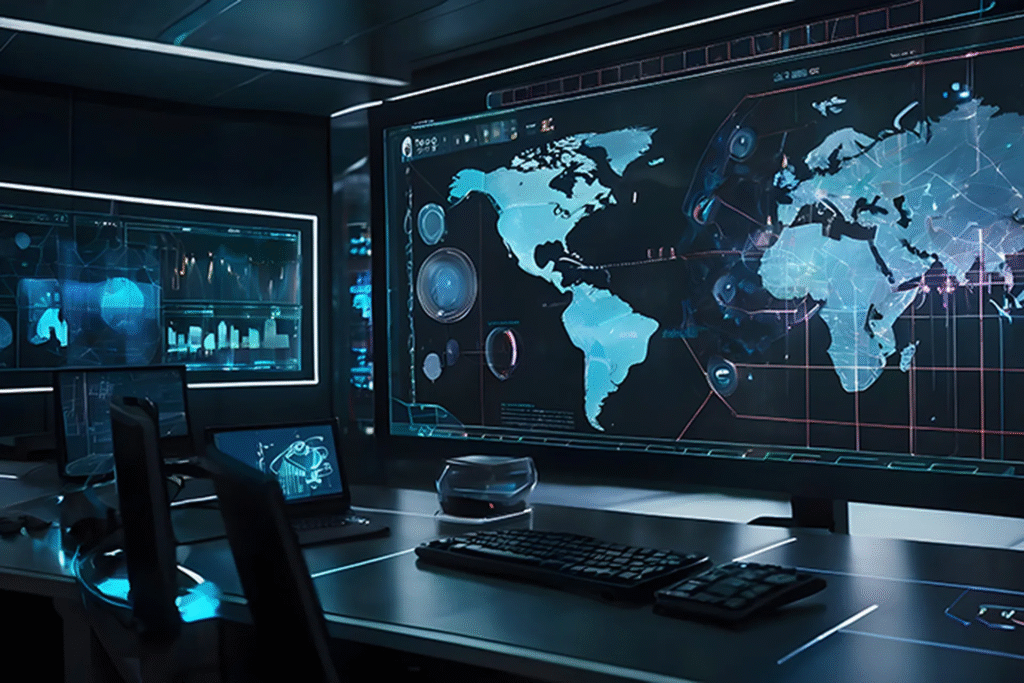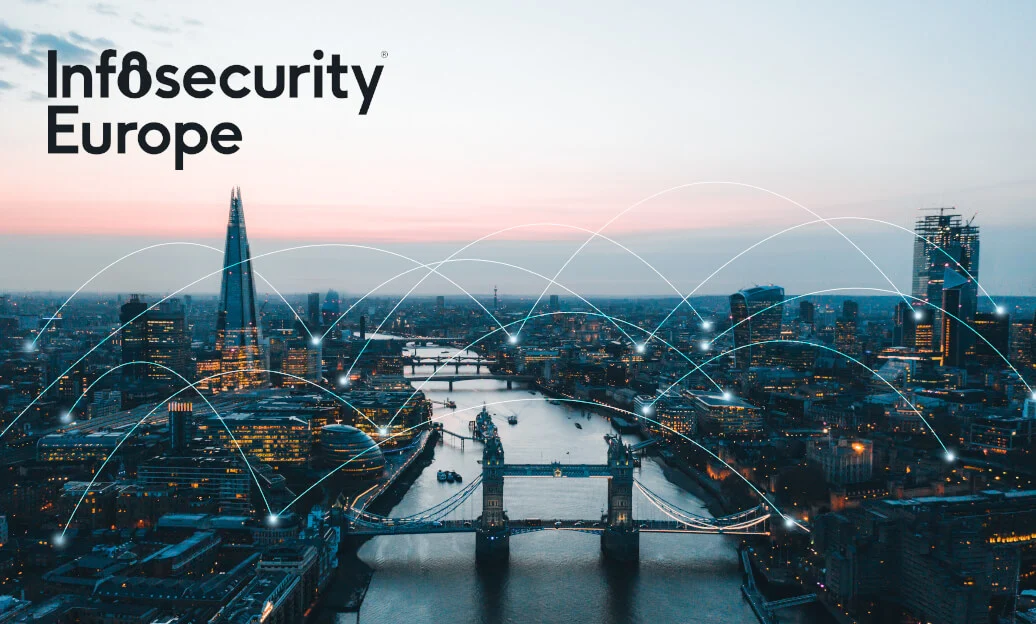London, UK — Infosec Europe 2025—now in its 30th year—concluded a landmark event at London’s ExCeL Centre, bringing together over 13,000 cybersecurity professionals from June 3–5. Under the banner “Building a Safer Cyber World,” the conference took a deep dive into rising threats, cutting-edge defense tools, and strategic frameworks needed to fortify modern infrastructures.
1. A Milestone in Cybersecurity Evolution
Founded in 1995, Infosec Europe has grown alongside the cyber landscape—from early antivirus era to cloud, AI, and data-centric threats. Its 30th edition was both a celebration and a stark reminder: digital defenses must evolve as fast as the risks. Over three days, the event featured 200+ keynote and panel sessions, 380+ exhibitors, and a wealth of peer-led learning .
2. Keynotes Spotlight Quantum and Nation-State Risks
- Professor Brian Cox opened the event with reflections on gravity’s role in quantum computing—highlighting the need for new cryptographic defenses .
- NCSC’s Paul Chichester addressed the specter of cyber warfare, warning that state-sponsored attacks targeting critical infrastructure are increasingly prevalent.
- Rory Stewart placed cyber threats in geopolitical context, citing malware like StuxNet and electoral manipulation as symptoms of a fragile global order .
3. The AI–Quantum–Cybersecurity Nexus
Infosec 2025 created a dedicated AI & Cloud Security Theatre, acknowledging that generative AI and deepfakes have become primary concerns—reported by 28% of cybersecurity professionals as today’s top threat driver sourcesecurity.com.
- Generative AI risks: including voice phish, fake imagery, and LLM misuse.
- Quantum threats: accelerating the push to post-quantum cryptography (PQC) to prevent “harvest now, decrypt later” attacks.
- Panel discussion “Calling BS on AI”: CrowdStrike warned that while AI empowers criminals, it also dismantles public trust via deepfake content.
For deeper breakdowns on evolving Cybersecurity, visit our home page.
4. Real-World Ransomware Readiness
Semperis led “Operation 999” ransomware simulation, prompting rapid blue-team responses to encrypted grids, insider extortion, and data poisoning scenarios, underscoring the importance of rehearsal for real-world disruption .
5. Identity and Data Resilience at the Forefront
Exhibitors showcased flagship solutions:
- Okta introduced AI-driven identity risk scoring, noting today’s hackers often bypass systems via stolen credentials.
- Rubrik demonstrated resilient backup-recovery tools capable of reducing ransomware recovery times from a month to just 48 hours.
- Cloudflare rolled out end-to-end PQC encryption on its unified platform—securing connections to websites, clouds, and future AI workloads.
6. Zero‑Trust, Post‑Quantum & Ransomware Readiness
Throughout the halls and stages, several tactics emerged as converging standards:
- Zero‑Trust architectures—eliminating implicit trust in users/devices.
- PQC adoption—organizations must migrate to quantum-resistant protocols.
- Ransomware preparedness—drills, segmented backups, recovery playbooks.
- Mixed reality—secure plugin development for future AR/VR environments.
Technology Magazine dubbed these “the pillars of modern enterprise cyber defense” at this year’s show.
7. Regulation, Governance & Skills Development
- Infosec spotlighted the EU AI Act, ISO 420001 standards, and evolving cybersecurity regulation—emphasizing how regulation can guide safe AI integration.
- ISACA’s SheLeadsTech mentorship spotlight widened discussions on gender equity in cybersecurity roles.
- SANS Masterclasses provided deep-dive training in cloud security, incident response, and ethical hacking infosecurityeurope.com.
8. The Geopolitical Challenge: Cyber Cold War

- Attendees heard about the “Cyber Cold War”, contrasting cyber as public tool and covert weapon.
- Discussion centered on volt Typhoon-type disruptions (e.g., power, water, communications) and the fragility of digital infrastructure.
- Analysts predict continued escalation, including state-aligned cyber groups, AI-enhanced espionage, and election interference.
9. Emerging Vendor Highlights
Other notable solutions included:
- Darktrace: proactive threat detection via AI-driven anomaly modeling.
- 1Password: rollout of SSA (SaaS access) visibility stemming from Trelica acquisition.
- NordVPN/Stellar: dark-web and credential breach alerts for executives .
- ThreatLocker: endpoint control and patch resource management features.
- DataMinr: AI-generated incident alerts used by global media—showcased value of real-time risk monitoring.
10. Future Forecast & Industry Implications
a. AI Threat Arms Race
Expect deeper investment in AI-safety tools—LLM checks, compiler reversibility, and AI red-teaming.
b. Quantum-proof Transition
Companies are now racing to deploy PQC, while developers await frameworks supporting hybrid crypto stacks.
c. Normalization of Ransomware Exercise
Simulations like Semperis’ will become standard in global CISO training.
d. Zero-Trust as Baseline
Trustless architectures may become regulated guidance rather than optional best practice.
e. Policy-Technology Nexus
With regulators pushing frameworks like the EU AI Act and US Cyber Bill, corporate cybersecurity strategies will be driven by compliance and capability.
f. Skills & Diversity Gaps
Investments in training (ISACA, SANS) and diversity will be mission-critical to close talent shortages.
g. Hardware Horizons
Future Infosec events may include encrypted AI accelerators, post-quantum IoT chips, and zero-trust edge devices.
Takeaways: What Organizations Should Act On
| Recommendation | Immediate Action |
| Adopt Zero‑Trust | Map identity flows & implement microsegmentation |
| Start PQC readiness | Inventory keys, begin algorithm transition plans |
| Schedule ransomware simulations | Deploy tabletop and red/blue exercises |
| Integrate AI‑Safety measures | Vet LLMs, use AI-safety layer tools |
| Upskill workforce & hire diversely | Pursue continuous education & leadership initiatives |
| Monitor geopolitical threat trends | Align cyber posture with national alerts and reporting |
Continue following conference recaps and industry press releases in our press‑release category.
Final Summary
Infosec Europe 2025 made it clear: AI and quantum are not distant concerns—they are accelerating today’s cyber threats. The event unified defense strategies around zero-trust, PQC, and resilience drills, while spotlighting identity and data protection.
As threats evolve—deepfake, ransomware, state-sponsored malware—organizations must prepare with more than platforms; they need strategy, agility, and global collaboration. Infosec Europe has once again set the benchmark for cyber defenders: proactive preparedness and forward-looking innovation.
Media Contact
Infosec Europe Press Team
press@infosecurityeurope.com
External Links
- Full coverage on highlights, keynotes, and exhibitions techradar.com.
- Coverage of AI, quantum, geopolitical themes and threat landscape insight patralok.com
